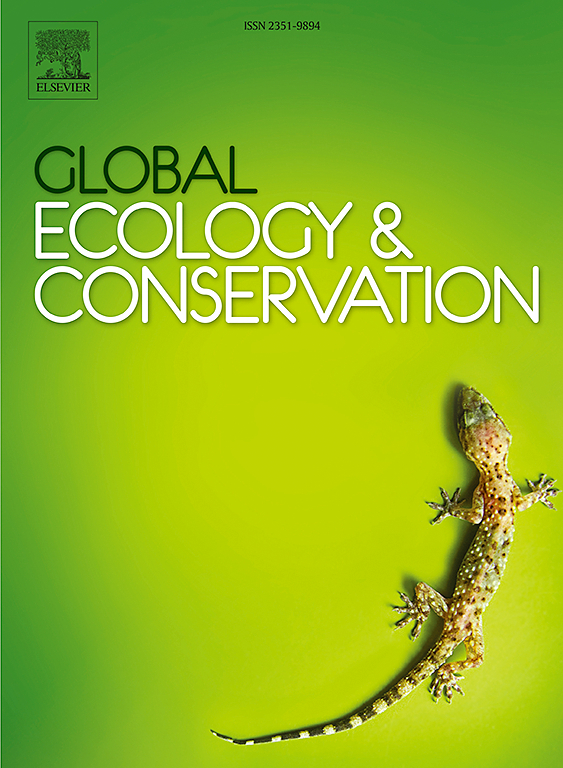Differential influences of island biogeographic effects on the diversity among three plant life-forms
IF 3.5
2区 环境科学与生态学
Q1 BIODIVERSITY CONSERVATION
引用次数: 0
Abstract
Traditional island biogeography posits that area and remoteness are key determinants of species richness. However, this theory is challenged by recent changes in species dispersal patterns caused by human activity and climate change. These emerging factors may affect the species richness of different plant life forms in distinct ways. While most studies focus on overall species richness, few have explored these factors separately influence trees, shrubs, and herbs. This study hypothesizes that the impacts of island area, remoteness, climate, and human activities vary across plant life-forms. By examining the species richness of three plant life-forms across 30 uninhabited islands on China's eastern continental shelf, we provide new insights into island biodiversity. We employed various statistical models and PLS-PM to interpret the mechanisms that maintain the richness of different plant life-forms. We found that species richness of total plants, trees, shrubs, and herbs showed a strong positive correlation with island area (0.36 ≤ R² ≤ 0.51, p < 0.01), while remoteness negatively affected total, tree, and shrub richness (0.15 ≤ R² ≤ 0.22, p < 0.05) but not herbs. Invasive plant richness increased with land use intensity and habitat heterogeneity (R² = 0.29, 0.47; p < 0.01). The PLS-PM showed that island biogeographic effects, climate, and human activities influence plant richness differently among the three plant life-forms. The area is a major determinant for shrub and herb richness, while remoteness has a more significant effect on tree species richness. Human activities positively affected tree richness but negatively affected shrub and herb richness. Climatic factors positively affected shrub species richness, but not tree and herb richness. Our study offers novel insights into island biogeography by exploring how island area, remoteness, climate, and human activities shape the diversity of trees, shrubs, and herbs. These findings underscore the importance of developing life-form-specific conservation strategies, especially in light of climate change and human influences.
岛屿生物地理效应对三种植物生命形式多样性的不同影响
本文章由计算机程序翻译,如有差异,请以英文原文为准。
求助全文
约1分钟内获得全文
求助全文
来源期刊

Global Ecology and Conservation
Agricultural and Biological Sciences-Ecology, Evolution, Behavior and Systematics
CiteScore
8.10
自引率
5.00%
发文量
346
审稿时长
83 days
期刊介绍:
Global Ecology and Conservation is a peer-reviewed, open-access journal covering all sub-disciplines of ecological and conservation science: from theory to practice, from molecules to ecosystems, from regional to global. The fields covered include: organismal, population, community, and ecosystem ecology; physiological, evolutionary, and behavioral ecology; and conservation science.
 求助内容:
求助内容: 应助结果提醒方式:
应助结果提醒方式:


